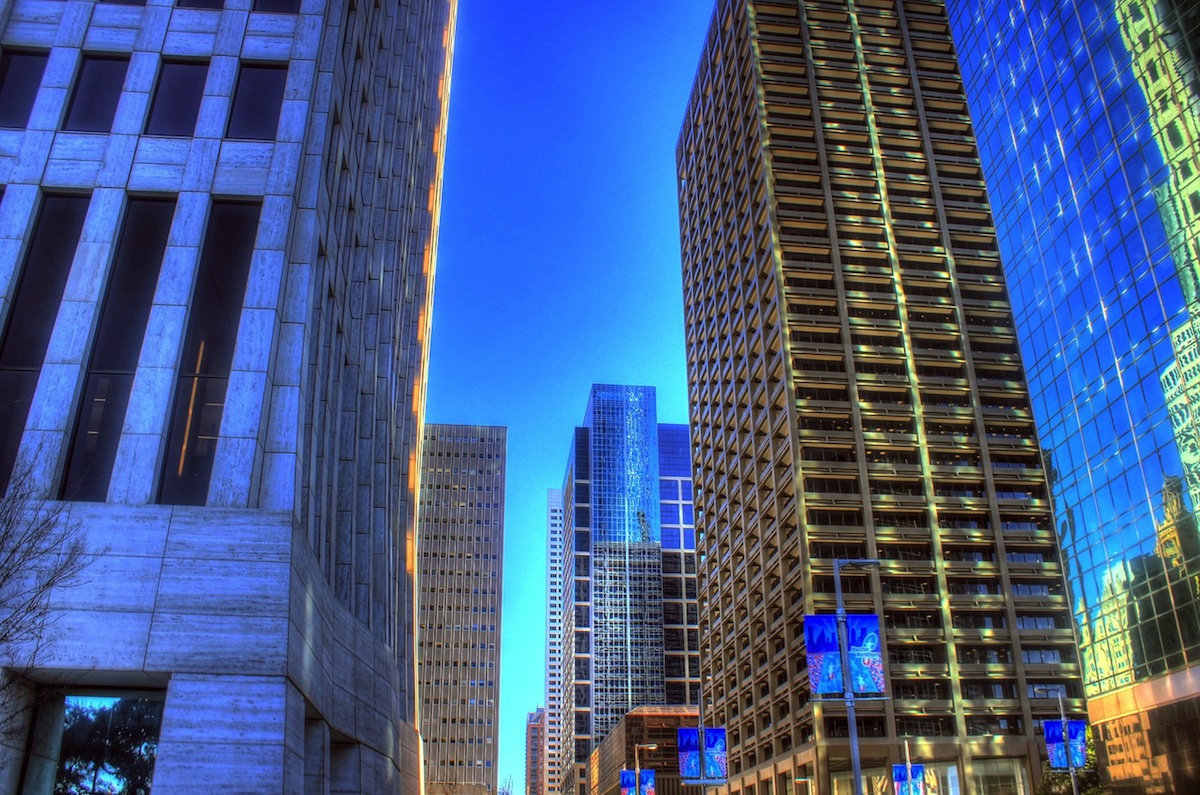Houston continues to be a paradise for AEC firms. The Texas metroplex has more than 14.4 million sf of office construction in the works, making it the No. 1 market in North America for office building, according to Colliers International’s 2015 North America Office Market report.
This report assesses 92 markets in the U.S. and Canada, and analyzes factors and trends that might impact the office construction market’s health. Despite a slow first quarter, Colliers is forecasting growth for this year.
The top 10 markets in North America, in descending order, are Houston, Seattle/Puget Sound, San Jose, Washington D.C., Dallas, Toronto, Calgary, San Francisco, Boston, and Phoenix. Combined, they accounted for 58% of the 113.8 million sf of office space underway in the U.S. and Canada in the first quarter of this year. That percentage is more than double these markets’ 27% share of existing office inventory.
As of the first quarter, office construction in the United States stood at 95.2 million sf, or 1% off from the same period a year earlier. However, deliveries in the first quarter, at 16 million sf, were the highest they’d been since the third quarter of 2009. Colliers says demand for new space “remains voracious” high-tech oriented markets. On the other hand, the greatest oversupply risk is in energy driven markets.
Colliers still sees the U.S. office market as positioned for expansion this year. “Growth in nearly every subsector of the primary office-using employment sectors in Q1 2015 despite numerous headwinds bodes well for office demand going forward,” it predicts. And outside of a handful of markets, oversupply is not a concern.
Among the 10 largest office construction markets:
• Seattle has 8.29 million sf under construction, the vast majority of which is being built in its downtown area, where existing inventory exceeds 56 million sf.
• In San Jose, all of its 8.1 million sf of new office construction is occurring in the suburbs, which already have 68.4 million sf of existing office space available, but where San Jose’s vacancy rate is only 8%.
• Washington D.C. has an 11.7% urban vacancy rate and a 17.5% suburban vacancy rate. Nevertheless, Washington has nearly 4.4.million sf of office space under construction in its suburbs, and another 2.4 million sf being built in its downtown.
• Only 450,000 sf of the 5.8 million sf of offices under construction in Dallas will be downtown. The same dynamic is occurring in Houston, where only 1.4 million sf of its total office construction is downtown.
Related Stories
Office Buildings | Jan 26, 2015
Seattle gets a peek at Amazon’s latest plans for its downtown complex
The online retailer is seeking permits to build on a fourth city block that would include 835,200 sf of office space.
| Jan 14, 2015
10 change management practices that can ease workplace moves
No matter the level of complexity, workplace change can be a challenge for your client's employees. VOA's Angie Lee breaks down the process of moving offices as efficiently as possible, from creating a "change team" to hosting hard-hat tours.
| Jan 13, 2015
SOM-designed Broadgate Exchange House wins Twenty-five Year Award
Exchange House, an elegant 10-story office building that spans over the merging tracks of London’s Liverpool Street Station, is located in London’s Broadgate Development.
| Jan 9, 2015
10 surprising lessons Perkins+Will has learned about workplace projects
P+W's Janice Barnes shares some of most unexpected lessons from her firm's work on office design projects, including the importance of post-occupancy evaluations and having a cohesive transition strategy for workers.
| Jan 9, 2015
Technology and media tenants, not financial companies, fill up One World Trade Center
The financial sector has almost no presence in the new tower, with creative and media companies, such as magazine publisher Conde Nast, dominating the vast majority of leased space.
| Jan 8, 2015
The future of alternative work spaces: open-access markets, co-working, and in-between spaces
During the past five years, people have begun to actively seek out third places not just to get a day’s work done, but to develop businesses of a new kind and establish themselves as part of a real-time conversation of diverse entrepreneurs, writes Gensler's Shawn Gehle.
Smart Buildings | Jan 7, 2015
Best practices for urban infill development: Embrace the region's character, master the pedestrian experience
If an urban building isn’t grounded in the local region’s character, it will end up feeling generic and out-of-place. To do urban infill the right way, it’s essential to slow down and pay proper attention to the context of an urban environment, writes GS&P's Joe Bucher.
| Jan 6, 2015
Construction permits exceeded $2 billion in Minneapolis in 2014
Two major projects—a new stadium for the Minnesota Vikings NFL team and the city’s Downtown East redevelopment—accounted for about half of the total worth of the permits issued.
| Jan 2, 2015
Construction put in place enjoyed healthy gains in 2014
Construction consultant FMI foresees—with some caveats—continuing growth in the office, lodging, and manufacturing sectors. But funding uncertainties raise red flags in education and healthcare.
| Dec 28, 2014
Robots, drones, and printed buildings: The promise of automated construction
Building Teams across the globe are employing advanced robotics to simplify what is inherently a complex, messy process—construction.















